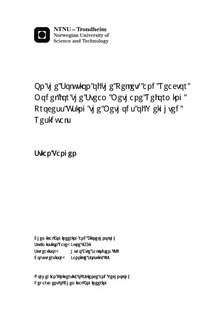| dc.contributor.advisor | Jakobsen, Hugo Atle | |
| dc.contributor.advisor | Solsvik, Jannike | |
| dc.contributor.author | Tangen, Stian | |
| dc.date.accessioned | 2015-10-06T07:37:38Z | |
| dc.date.available | 2015-10-06T07:37:38Z | |
| dc.date.created | 2012-06-15 | |
| dc.date.issued | 2012 | |
| dc.identifier | ntnudaim:8158 | |
| dc.identifier.uri | http://hdl.handle.net/11250/2351835 | |
| dc.description.abstract | The purpose of the thesis is to prove that the mole based formulation of a pellet model simulating the steam methane reforming reaction is identical to the novel mass based formulation. To prove this, the numerical methods of orthogonal collocation and least squares will be used. These numerical methods will also be examined to ensure that no numerical differences occur because of the numerical method used.
The different formulations were proven identical for the Maxwell-Stefan and the dusty gas diffusion models. This was not obtainable for the relatively simpler Wilke and Wilke-Bosanquet models. It was also proven that the numerical methods of orthogonal collocation and least squares yield identical results both for diffusion dominated and convective dominated problems. However, the orthogonal collocation method was superior in the terms of simulation speed for diffusion dominated problems, whereas the least squares method is superior for convective dominated problems.
A novel under-relaxation method was also developed during the thesis. By application of this method to the pellet models a reduction in simulation times by approximately 75% was seen. | |
| dc.language | eng | |
| dc.publisher | NTNU | |
| dc.subject | Industriell kjemi og bioteknologi, Kjemisk prosessteknologi | |
| dc.title | On the Solution of the Pellet- and Reactor Model for the Steam Methane Reforming Process Using the Methods of Weighted Residuals | |
| dc.type | Master thesis | |
| dc.source.pagenumber | 183 | |

